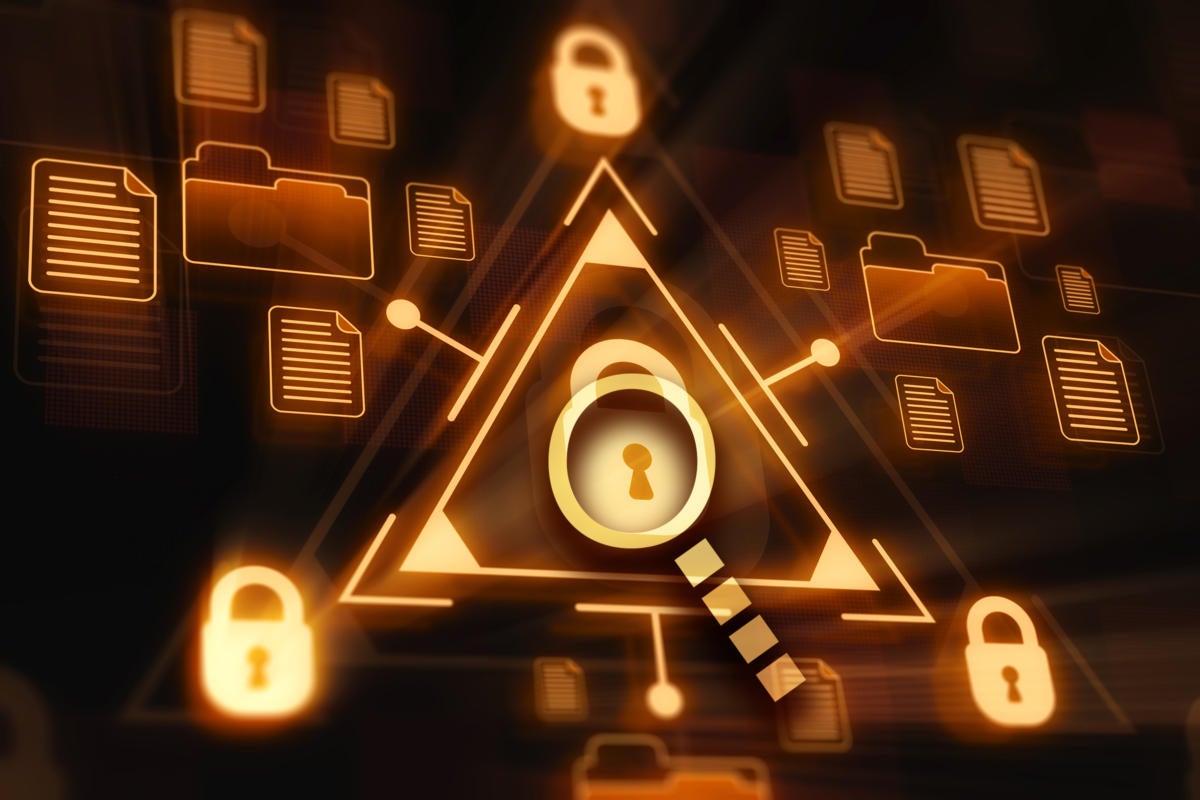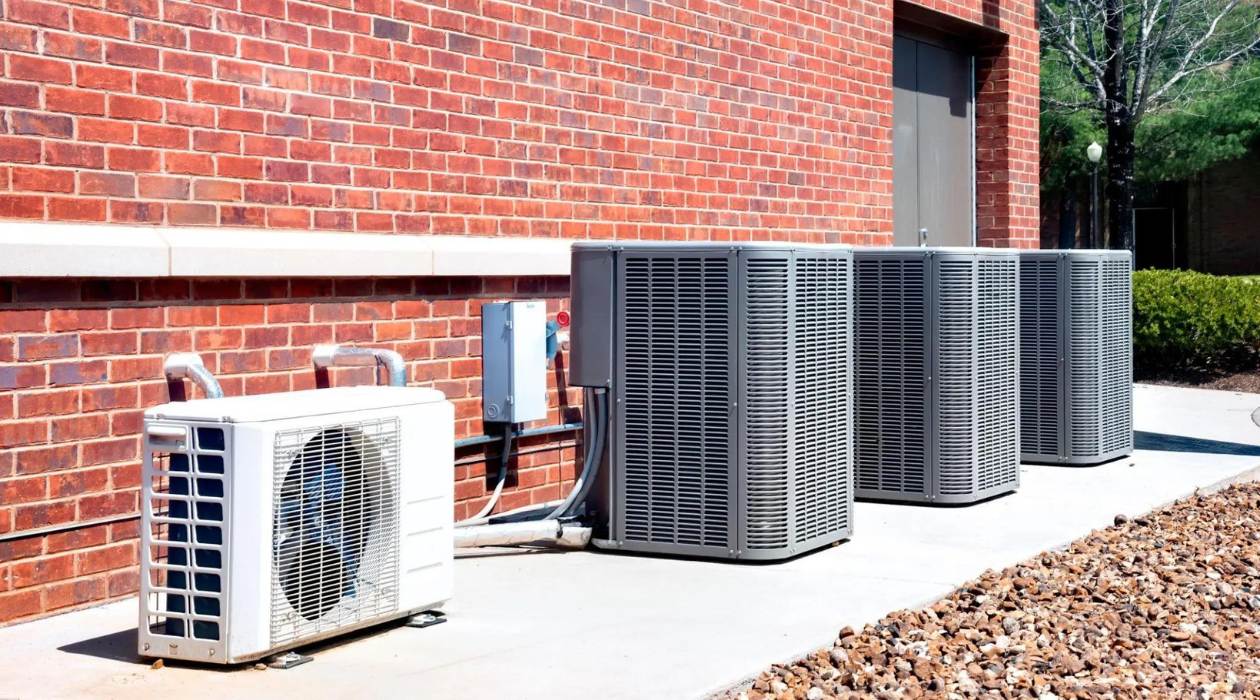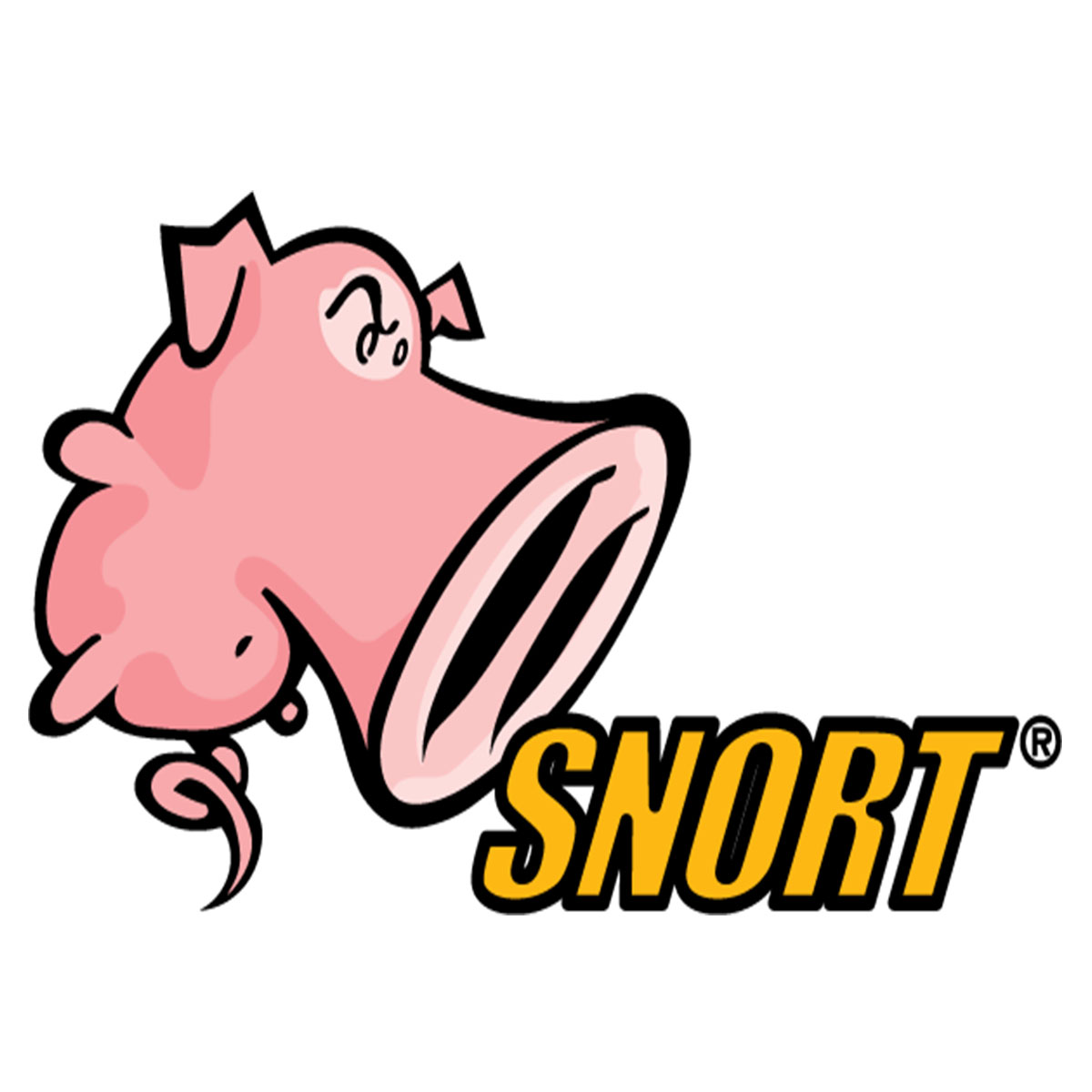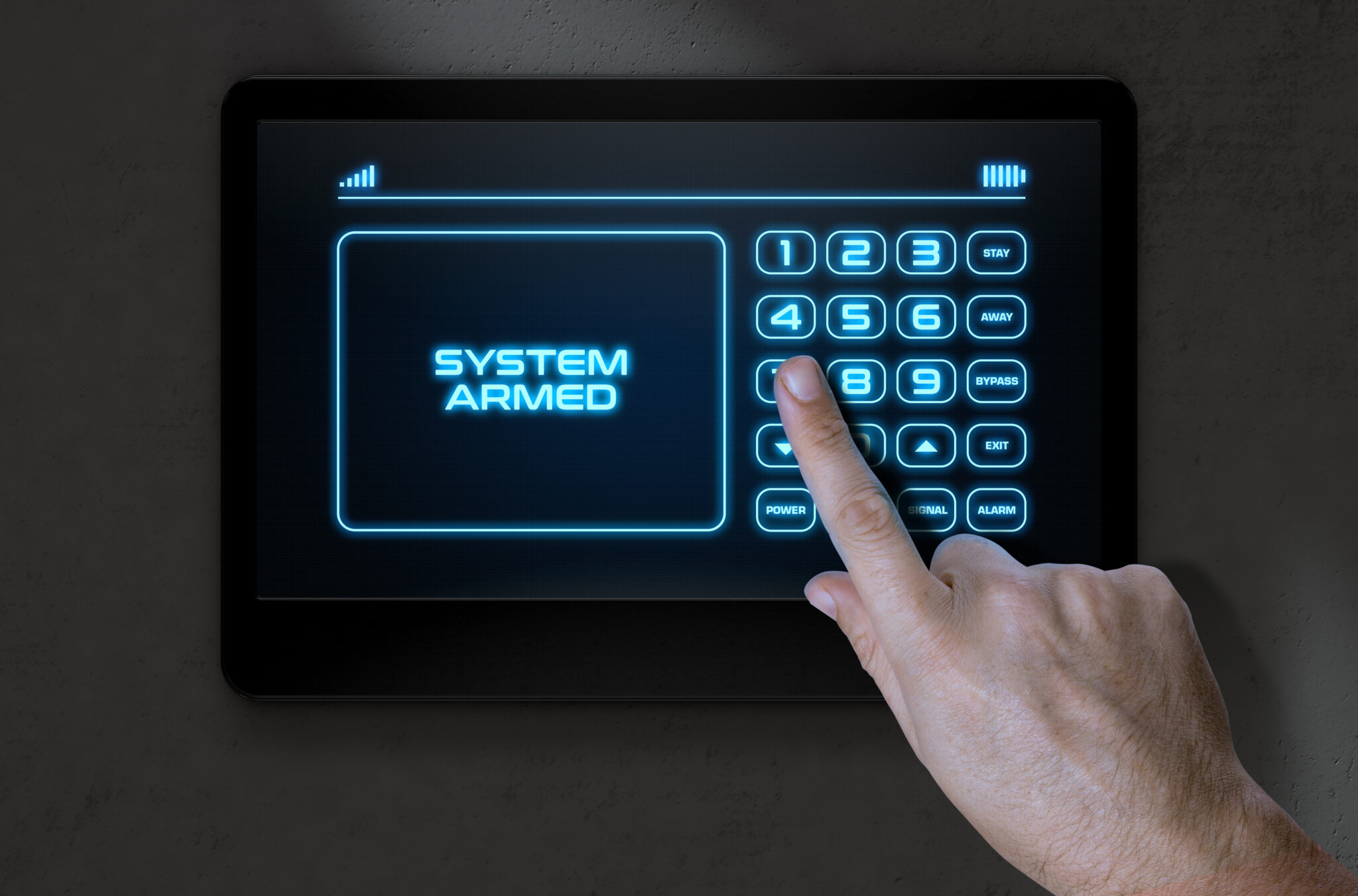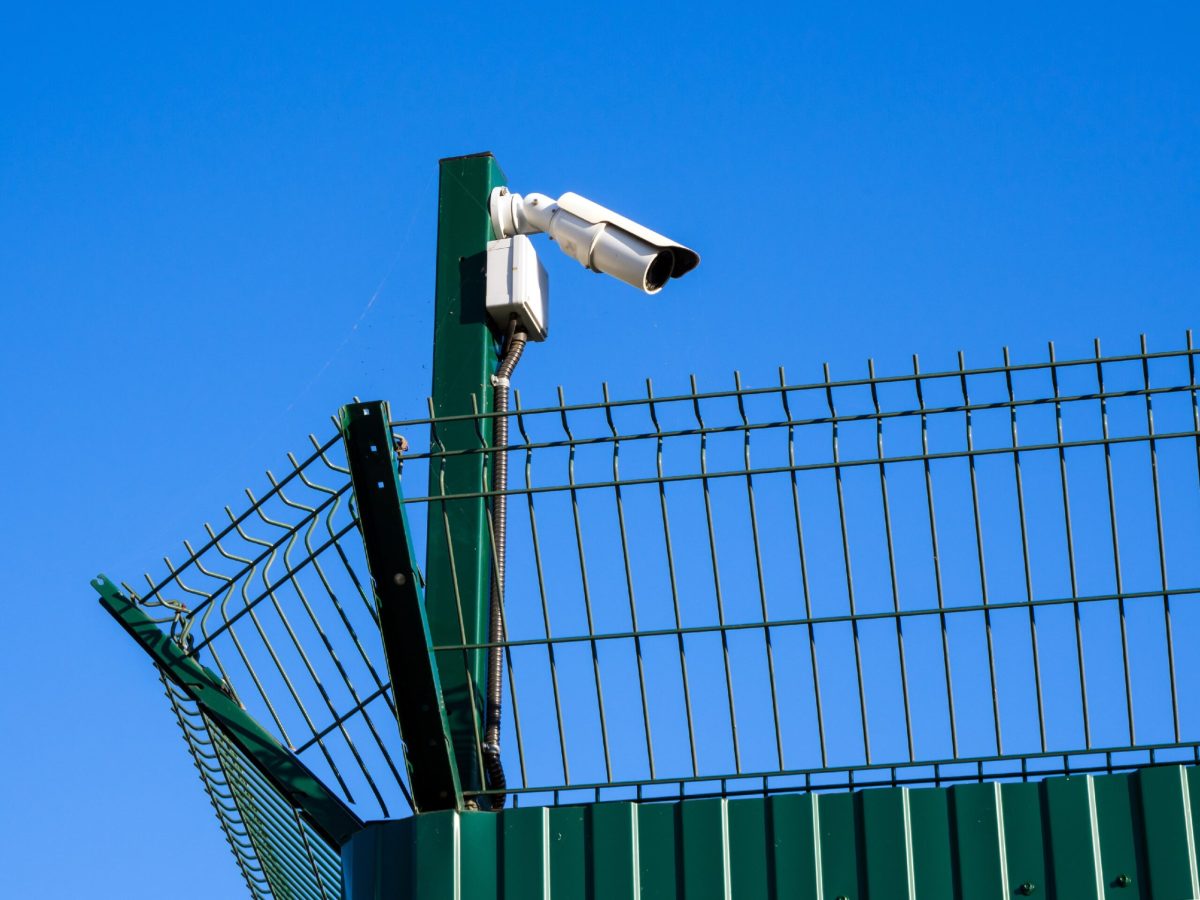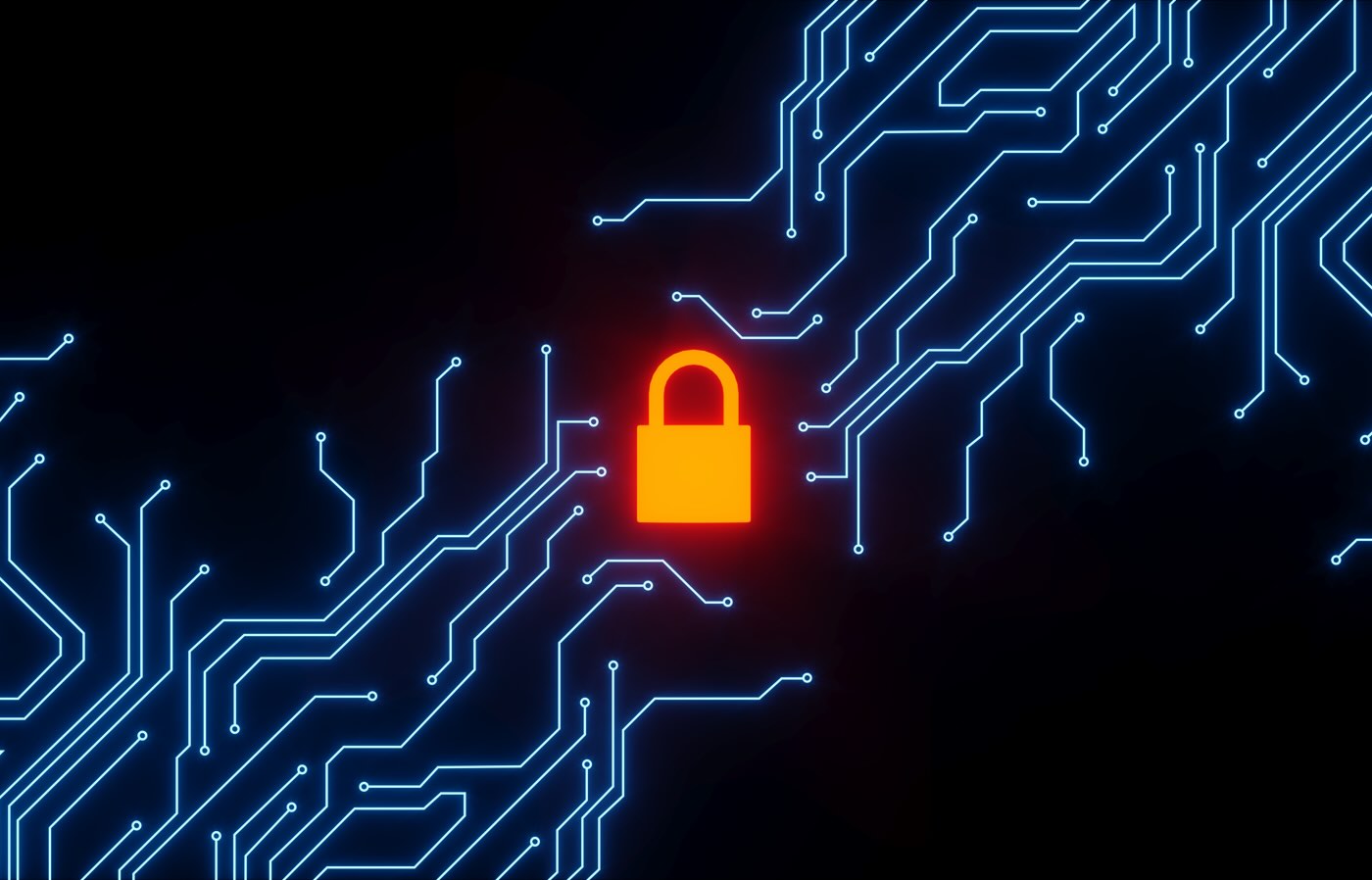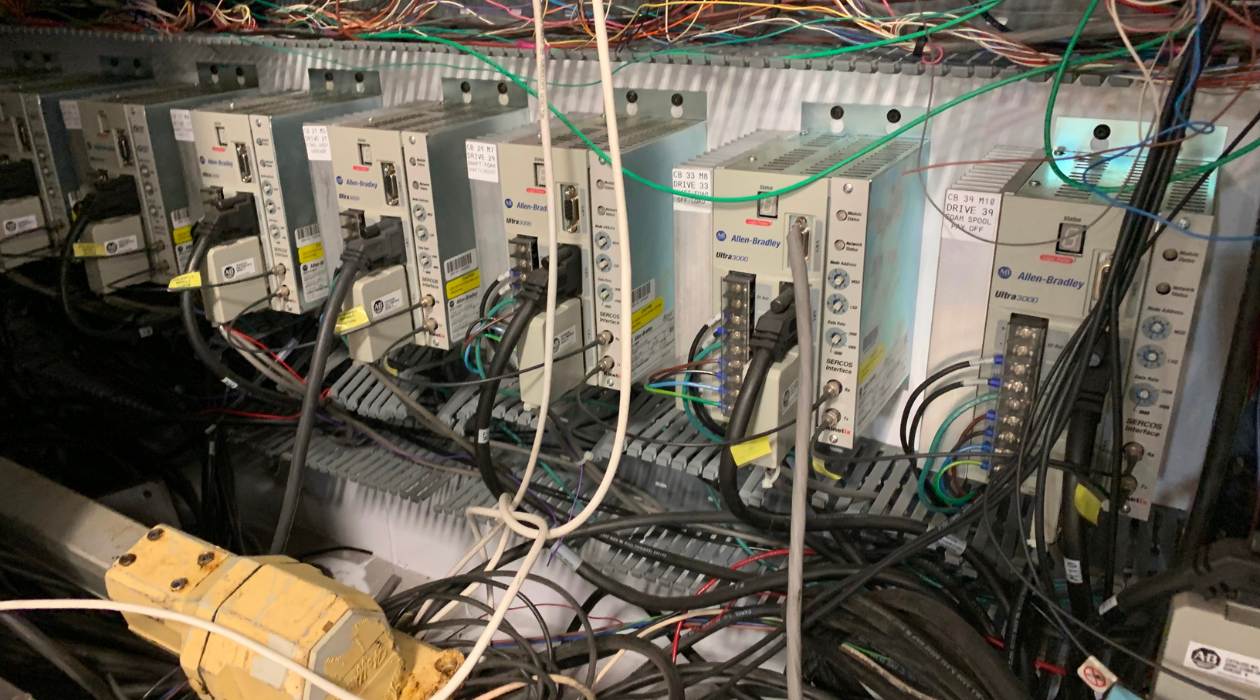Home>Home Security and Surveillance>How Do Intrusion Detection System Preferences Differ Between USA And European Tech Industries


Home Security and Surveillance
How Do Intrusion Detection System Preferences Differ Between USA And European Tech Industries
Modified: March 24, 2024
Discover how intrusion detection system preferences vary between the USA and European tech industries in the realm of home security and surveillance.
(Many of the links in this article redirect to a specific reviewed product. Your purchase of these products through affiliate links helps to generate commission for Storables.com, at no extra cost. Learn more)
Introduction
Welcome to the world of home security and surveillance! In today’s fast-paced and technologically advanced society, ensuring the safety and protection of our homes has become a top priority. With advancements in home security systems, one of the key components that plays a crucial role in safeguarding our homes is the intrusion detection system.
An intrusion detection system (IDS) is designed to detect unauthorized access or malicious activities within a network or a physical location. It serves as an extra layer of security, alerting homeowners or security personnel when any suspicious activity is detected.
As the demand for home security and surveillance systems continues to grow, it is interesting to explore how the preferences for intrusion detection systems differ between the USA and European tech industries. These two regions are known for their significant contributions to the technological advancements in various sectors, including home security.
This article aims to delve into the preferences of intrusion detection systems in the USA and European tech industries, highlighting the factors that drive these variances. By examining these differences, we can gain insights into the unique preferences of each region and better understand the factors that shape their decision-making process when it comes to home security.
Key Takeaways:
- In the USA, home security systems focus on high-tech features, seamless integration with smart home devices, and user-friendly interfaces. Privacy is important, but convenience and advanced threat detection take the lead.
- In Europe, privacy, sustainability, and interoperability drive home security system preferences. Consumers prioritize data protection, energy efficiency, and transparent data handling practices. Regional regulations and cultural values shape these preferences.
Methodology
To examine the differences in intrusion detection system preferences between the USA and European tech industries, we conducted extensive research using a mixed-method approach. This involved a combination of qualitative and quantitative methods to gather comprehensive data from reliable sources.
Firstly, we conducted a thorough literature review to gain a comprehensive understanding of the current trends and preferences in the home security and surveillance industry. We analyzed research papers, industry reports, and case studies to identify the key factors that influence intrusion detection system preferences.
Next, we utilized online surveys and interviews to gather insights from professionals working in the USA and European tech industries. These individuals, including security experts and professionals involved in the development and deployment of home security systems, provided valuable insights into the factors driving their preferences for intrusion detection systems.
Additionally, we analyzed data from market research reports and industry databases to assess the market share and popularity of different intrusion detection system brands and technologies in both regions. This quantitative data helped us identify the most widely used and preferred systems in the USA and European tech industries.
We also considered regional regulations and standards pertaining to home security and surveillance in both the USA and Europe. These factors influence the availability and functionality of certain intrusion detection system features, and therefore, play a role in shaping preferences.
By following this comprehensive research methodology, we aimed to provide an accurate and unbiased analysis of the differences in intrusion detection system preferences between the USA and European tech industries. The combination of qualitative and quantitative methods ensures a holistic understanding of the factors that contribute to these disparities.
Background of Intrusion Detection Systems
Intrusion detection systems (IDS) have become an integral part of modern home security and surveillance setups. These systems are designed to detect and prevent unauthorized access to networks or physical locations, providing an additional layer of protection against potential threats.
There are two main types of intrusion detection systems: network-based and host-based. Network-based IDS monitor network traffic and detect any suspicious activity or patterns that may indicate a potential intrusion. Host-based IDS, on the other hand, focus on monitoring individual devices or hosts within a network for signs of unauthorized access or malicious activities.
The primary goal of an intrusion detection system is to identify and alert security personnel or homeowners regarding any potential security breaches. This early detection enables timely response and mitigation measures to minimize the impact of the intrusion.
Over the years, intrusion detection systems have evolved to incorporate advanced technologies and techniques to enhance their effectiveness. These include:
- Signature-based detection: IDS systems use a database of known attack signatures to identify and block known threats. This method relies on pre-defined patterns and signatures of attacks that have been previously identified.
- Anomaly-based detection: This approach involves learning and analyzing normal network or device behavior to identify any deviations or anomalies that may signal an intrusion. It is particularly useful in detecting new or unknown threats.
- Behavioral-based detection: IDS systems analyze patterns of behavior within a network or device to identify changes that may indicate an intrusion. This method focuses on identifying abnormal behavior rather than specific attack signatures.
With the advancements in artificial intelligence and machine learning, intrusion detection systems are becoming more intelligent and capable. They can adapt and learn from new threats and continuously update their detection capabilities.
Furthermore, modern intrusion detection systems often integrate with other home security components, such as surveillance cameras, access control systems, and alarms, creating a comprehensive security ecosystem. This integration allows for a more coordinated and effective response to potential threats.
Understanding the background and capabilities of intrusion detection systems is essential in comprehending the preferences and choices made by the USA and European tech industries. These systems provide a crucial defense against ever-evolving security threats, and their selection is driven by various factors, including industry norms, regulations, and technological advancements.
Overview of the USA Tech IndustryThe USA is home to one of the most vibrant and influential tech industries in the world. From Silicon Valley to the bustling startup hubs in New York City and Boston, the USA tech industry is known for its innovation, entrepreneurship, and technological advancements.
The tech industry in the USA encompasses a wide range of sectors, including software development, telecommunications, hardware manufacturing, and cybersecurity. It is a driving force behind the digital transformation and has a significant impact on various aspects of society and the economy.
In terms of home security and surveillance, the USA tech industry has played a crucial role in advancing the capabilities and features of intrusion detection systems. Many renowned companies and startups in the USA have developed cutting-edge technologies and products that have revolutionized the way we secure our homes.
The USA tech industry is characterized by its emphasis on innovation and competitiveness. Startups and established companies alike continuously strive to develop unique and disruptive solutions that address the evolving needs of consumers. This leads to a diverse range of intrusion detection system preferences.
Additionally, the USA tech industry is driven by a strong culture of data privacy and security. With numerous high-profile data breaches in recent years, there is a heightened awareness of the importance of robust security measures. This focus on security influences the preferences for intrusion detection systems that prioritize advanced threat detection and prevention capabilities.
The USA tech industry is also shaped by market dynamics and consumer preferences. Homeowners in the USA value convenience, ease of use, and integration when it comes to home security systems. Therefore, intrusion detection systems that seamlessly integrate with other smart home devices and platforms are highly sought after.
Moreover, the USA tech industry is influenced by regulatory frameworks and industry standards. Compliance with regulations, such as the National Institute of Standards and Technology (NIST) guidelines and the UL certification, is important for companies operating in the home security and surveillance sector. Preferences for intrusion detection systems often adhere to these standards to ensure compatibility and reliability.
Overall, the USA tech industry is a thriving and influential force in the home security and surveillance sector. Its emphasis on innovation, security, and consumer preferences shape the choices and preferences for intrusion detection systems in this region.
Preferences of Intrusion Detection Systems in the USA Tech Industry
The USA tech industry exhibits a diverse range of preferences when it comes to intrusion detection systems. These preferences are driven by various factors, including industry trends, technological advancements, and consumer demands. Here are some key preferences observed in the USA tech industry:
- Advanced Threat Detection: The USA tech industry places significant importance on advanced threat detection capabilities. Intrusion detection systems that utilize machine learning, artificial intelligence, and behavior-based analysis are highly favored. These systems can identify and respond to emerging threats in real-time, providing a proactive defense against potential security breaches.
- Integration with Smart Home Devices: The demand for integrated home security solutions is prominent in the USA tech industry. Homeowners prefer intrusion detection systems that seamlessly integrate with other smart home devices and platforms, allowing them to control and monitor their security systems using a single interface. Integration with voice assistants, mobile apps, and home automation systems is highly valued.
- User-Friendly Interfaces: Ease of use and intuitive interfaces are essential preferences in the USA tech industry. Homeowners want intrusion detection systems that are easy to set up, configure, and operate. Systems with user-friendly interfaces, clear instructions, and visual indicators are preferred, enabling homeowners to manage their security systems with minimal effort.
- Scalability and Flexibility: The USA tech industry values intrusion detection systems that offer scalability and flexibility. As homes and security needs vary, systems that can adapt to different environments and accommodate future expansions are favored. The ability to add or remove sensors, cameras, and other components without disrupting the overall system is highly desirable.
- Cloud-Based Storage and Monitoring: Cloud-based storage and monitoring solutions are gaining popularity in the USA tech industry. Homeowners prefer intrusion detection systems that offer cloud storage options for video footage and remote access to system controls. This allows for easy access to security data and enables users to monitor their homes from anywhere in the world.
- Reliability and Customer Support: Reliability is a key preference in the USA tech industry. Homeowners want intrusion detection systems that are dependable and robust, providing continuous protection and minimal false alarms. Additionally, prompt and responsive customer support is highly valued, ensuring any technical issues or concerns can be addressed promptly.
These preferences in the USA tech industry reflect a focus on cutting-edge technologies, convenience, and user experience. By understanding these preferences, companies in the home security and surveillance sector can develop and offer intrusion detection systems that cater to the unique needs and expectations of homeowners in the USA.
When comparing intrusion detection system preferences between USA and European tech industries, consider factors such as regulatory differences, cultural attitudes towards privacy and data security, and the specific threat landscape in each region.
Read more: What Is The Difference Between Anomaly Detection And Signature-Based Intrusion Detection?
Overview of the European Tech Industry
The European tech industry is a vibrant and diverse ecosystem that encompasses a wide range of countries, each with its own unique characteristics and strengths. From Germany’s engineering prowess to the United Kingdom’s startup culture, Europe is home to numerous tech hubs that drive innovation and technological advancement.
The tech industry in Europe is known for its collaboration, research and development, and focus on sustainability. European countries emphasize investing in education, infrastructure, and entrepreneurship, fostering an environment that encourages innovation and supports the growth of tech startups.
In terms of home security and surveillance, the European tech industry has made significant contributions to the development of intrusion detection systems. European companies have been at the forefront of creating cutting-edge technologies and solutions that prioritize efficiency, reliability, and privacy.
One notable aspect of the European tech industry is the strong emphasis on data protection and privacy. European countries have stringent regulations, such as the General Data Protection Regulation (GDPR), which mandate the protection of personal data and privacy rights. This focus on privacy impacts the preferences for intrusion detection systems in Europe.
The European tech industry also places a high value on sustainability and energy efficiency. Intrusion detection systems that minimize energy consumption and utilize eco-friendly materials are preferred. This aligns with the European commitment to environmental consciousness and sustainable development.
Furthermore, the European tech industry has a strong focus on interoperability and open standards. European countries strive for compatibility and collaboration among different technologies and systems. Preferences for intrusion detection systems revolve around the ability to integrate with other security devices and platforms seamlessly. Open protocols and standards are highly favored.
In terms of market dynamics, the European tech industry displays a diverse range of preferences. While some countries prioritize affordability and cost-effectiveness, others emphasize superior performance and reliability. The preferences may vary based on factors such as market maturity, consumer demands, and regional regulations.
Overall, the European tech industry is characterized by its commitment to privacy, sustainability, and interoperability. By understanding these preferences, companies in the home security and surveillance sector can tailor their intrusion detection systems to align with the unique requirements and values of consumers in the European market.
Preferences of Intrusion Detection Systems in the European Tech Industry
The European tech industry showcases distinct preferences when it comes to intrusion detection systems. These preferences are shaped by factors such as regional regulations, privacy concerns, sustainability, and market dynamics. Here are some key preferences observed in the European tech industry:
- Privacy and Data Protection: The European tech industry places a strong emphasis on privacy and data protection. Intrusion detection systems that prioritize user privacy and adhere to strict data protection regulations, such as the GDPR, are highly favored. Systems that offer robust encryption, user consent controls, and anonymization techniques resonate well with European consumers.
- Sustainability and Energy Efficiency: European countries have a deep commitment to sustainability and energy efficiency. Intrusion detection systems that minimize energy consumption, utilize renewable resources, and incorporate eco-friendly materials are preferred. European consumers value eco-conscious products that align with their sustainable lifestyle choices.
- Interoperability and Open Standards: The European tech industry promotes interoperability and open standards. Intrusion detection systems that can seamlessly integrate with other security devices, home automation platforms, or smart home ecosystems are highly sought after. Preferences lean towards systems that support open protocols and standards to ensure compatibility and flexibility.
- User Control and Transparency: European consumers value control and transparency in their intrusion detection systems. Preferences lean towards systems that provide users with clear visibility and control over their security settings and data. Transparency in terms of system functionality, data handling processes, and third-party integrations is highly regarded.
- Reliability and Performance: Intrusion detection systems in the European tech industry are expected to deliver reliable performance. Systems with low false positive rates, accurate detection, and timely alerts are preferred. Robustness and resilience are valued, ensuring the system remains operational even in challenging conditions.
- Flexibility and Customization: European consumers appreciate intrusion detection systems that offer flexibility and customization. Preferences lean towards systems that can adapt to various home environments and accommodate individual security needs. Systems that enable users to customize detection sensitivity, notification preferences, and system configurations are highly desirable.
These preferences reflect the values and demands of European consumers. Privacy, sustainability, interoperability, and user empowerment play central roles in shaping the choices and preferences for intrusion detection systems in the European tech industry. By aligning with these preferences, companies can better cater to the unique requirements and expectations of European consumers.
Comparison of Intrusion Detection System Preferences in the USA and European Tech Industries
The preferences for intrusion detection systems in the USA and European tech industries demonstrate both similarities and differences. While both regions prioritize advanced threat detection and user-friendly interfaces, there are notable variations driven by factors such as culture, regulations, and market dynamics.
In terms of similarities, both the USA and European tech industries value intrusion detection systems that offer advanced threat detection capabilities. Machine learning, artificial intelligence, and behavior-based analysis are highly favored in both regions. Additionally, both regions emphasize the importance of user-friendly interfaces, opting for systems that are easy to set up, configure, and operate.
However, there are notable differences in preferences between the two regions. The USA tech industry places a strong emphasis on integration with other smart home devices and platforms. Homeowners in the USA prefer intrusion detection systems that seamlessly integrate with voice assistants, mobile apps, and home automation systems. On the other hand, the European tech industry emphasizes interoperability and open standards, valuing systems that can integrate with various security devices and platforms.
Privacy and data protection are of utmost importance in the European tech industry. Strict regulations such as the GDPR shape preferences for intrusion detection systems that prioritize user privacy, robust encryption, and transparent data handling practices. While privacy is also valued in the USA tech industry, it is not as pervasive as in Europe, and the preferences lean slightly more towards convenience and usability.
Another point of divergence is sustainability and energy efficiency. The European tech industry places a significant emphasis on eco-conscious products that minimize energy consumption and utilize renewable resources. In contrast, while sustainability is important in the USA tech industry, it is not as pronounced, with preferences leaning more towards performance and reliability.
Regional market dynamics also contribute to the differences in preferences. Cost-effectiveness and affordability are significant factors in the USA tech industry, influencing the choices of intrusion detection systems. In Europe, preferences are influenced by factors such as regional regulations, local market maturity, and varying consumer demands across different countries.
Overall, the USA and European tech industries converge on certain preferences such as advanced threat detection and user-friendly interfaces. However, differences emerge in areas such as integration, privacy, sustainability, and market dynamics. Understanding these divergences allows companies in the home security and surveillance sector to tailor their intrusion detection systems to meet the specific preferences and requirements of consumers in each region.
Factors Influencing the Differences in Preferences
Several factors contribute to the differences in preferences for intrusion detection systems between the USA and European tech industries. These factors stem from regional characteristics, cultural values, regulatory frameworks, technological advancements, and market dynamics. Here are some key factors influencing the variations in preferences:
- Regulatory Environment: The regulatory environment plays a significant role in shaping preferences. In Europe, strict data protection regulations like the GDPR influence preferences for intrusion detection systems that prioritize privacy and transparent data handling practices. In the USA, while privacy is valued, there is a greater emphasis on convenience and usability.
- Cultural Values: Cultural values also impact preferences. The emphasis on integration with smart home devices in the USA tech industry reflects the culture of convenience and continuous connectivity. In contrast, the focus on open standards and interoperability in Europe aligns with a collaborative and inclusive societal approach.
- Market Maturity: Differences in market maturity contribute to divergent preferences. The USA tech industry has a more mature market with established players and a wider range of available options, leading to preferences that prioritize affordability and cost-effectiveness. In some European countries, where the market is still developing, preferences may lean more towards performance and reliability.
- Technological Advancements: Technological advancements influence preferences by driving innovation and introducing new capabilities. Factors like access to research and development, investment in emerging technologies, and local expertise contribute to the varying levels of technological advancements in the USA and European tech industries.
- Consumer Demands: Consumer demands and expectations differ between the USA and Europe. Preferences are influenced by factors like lifestyle choices, sustainability priorities, and the balance between security and convenience. Understanding these diverging consumer demands helps shape the preferences for intrusion detection systems in each region.
- Industry Norms and Standards: Industry norms and standards play a crucial role in shaping preferences. Compliance with regulations such as the NIST guidelines and UL certification is important in the USA tech industry. In Europe, adherence to the GDPR and other regional standards influences the preferences for systems that prioritize data protection and privacy.
These factors interact and intertwine, resulting in the divergent preferences observed in the USA and European tech industries. Understanding these influences helps industry practitioners cater to the specific preferences and requirements of consumers in each region, enabling them to develop intrusion detection systems that align with the unique characteristics and values of the market.
Conclusion
The preferences for intrusion detection systems in the USA and European tech industries are influenced by a range of factors, including regional regulations, cultural values, market dynamics, and technological advancements. While there are some similarities in preferences, there are substantial differences that reflect the unique characteristics of each region.
In the USA tech industry, the focus is on cutting-edge technologies, integration with smart home devices, and user-friendly interfaces. Advanced threat detection capabilities and scalability are also key considerations. Privacy is important but is often balanced with convenience and usability.
In contrast, the European tech industry places strong emphasis on privacy, data protection, sustainability, and interoperability. Consumers in Europe prioritize intrusion detection systems that comply with strict data protection regulations, such as the GDPR. Energy efficiency, compatibility with other security devices, and transparent data handling practices are valued.
The differences in preferences stem from various factors, including the regulatory environment, cultural values, market maturity, and consumer demands. Understanding these factors is crucial for companies in the home security and surveillance sector to tailor their intrusion detection systems to meet the specific requirements and expectations of consumers in each region.
As the field of home security and surveillance continues to evolve, it is essential to stay attuned to the preferences and trends in both the USA and European tech industries. This enables companies to develop intrusion detection systems that incorporate cutting-edge technologies, address privacy concerns, and align with regional market dynamics.
By considering the unique characteristics of each region, incorporating technological advancements, and addressing consumer demands, companies can position themselves for success in the ever-expanding home security and surveillance market. Ultimately, the goal is to provide homeowners with reliable, user-friendly, and effective intrusion detection systems that bring peace of mind and enhance the security of their homes.
Frequently Asked Questions about How Do Intrusion Detection System Preferences Differ Between USA And European Tech Industries
Was this page helpful?
At Storables.com, we guarantee accurate and reliable information. Our content, validated by Expert Board Contributors, is crafted following stringent Editorial Policies. We're committed to providing you with well-researched, expert-backed insights for all your informational needs.
